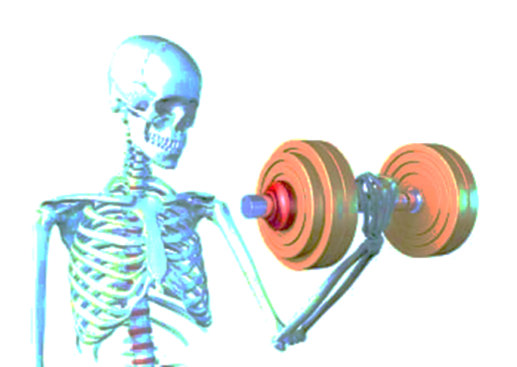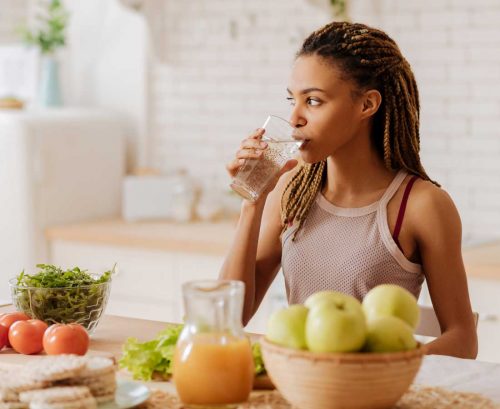Almost 15% of Australian women over the age of 50 have osteoporosis, and perhaps another 8% are going undiagnosed. Women are far more prone to developing osteoporosis than men with only about 3-6% of men developing osteoporosis. Osteoporosis risk is intrinsically linked to your peak bone mass that is achieved in your late teens and through the twenties. Men, on average develop a higher peak mass than women. This bone mass generally remains quite stable with only a very slow decline of probably less than half a percent per year. However, in women, the menopause occurs and there is a rapid acceleration in the loss of bone loss, particularly in those first five years after menopause. The rate of bone loss occurs at about 5% every year during the two to three years before and three to four years after the menopause. After this time, the bone loss stabilizes again to about a 1% loss each year. On the other hand, men start with a higher peak bone mass and do not have this equivalent menopausal transition, therefore, they tend to maintain a better bone mineral density as they age.
Osteoporosis is a condition that develops when you have lost enough bone density to cause the bones to become very weak and fragile. Minor accidents or bumps can lead to broken bones. The bones are quite dynamic and most importantly are a living tissue in our body. It is always under construction. Two important cells within the bone are:
- Osteoclasts – which act to resorb or eat away your bone to allow the new bone to form, and
- Osteoblasts – this lays down new bone during remodelling.
If there is too much activity of the osteoclasts and the bone is eaten away faster than it can reform, then the bone density will be depleted and cause osteoporosis. On the other hand, if the osteoblast activity decreases, it also will cause of loss of bone density and lead to osteoporosis. Therefore, we need to keep the activity of both of these cells in perfect harmony. Too much oxidative stress or inflammation in the body tips the balance towards excessive osteoclast activity and insufficient osteoblast activity leading to a lower bone density. Reducing inflammation and oxidative stress is the key to good bone health. This fits with the research that does show that women with osteoporosis do have low anti-oxidant levels in their bodies.
There are multiple other factors that can increase your risk of developing osteoporosis:
- Age: particularly over the age of 50.
- Gender: compared to men, women have a lower peak bone density earlier in life.
- Genetics: there is a much greater risk of developing osteoporosis if you have a close female relative with the condition.
- Premature menopause: those women who go through menopause earlier have less years of their protective natural estrogen to help retain the calcium in the bone.
- Sedentary lifestyle: immobilization is an enemy to the bone density.
- Smoking: interferes with calcium absorption and thus adversely effects bone mass in both men and women.
- Low calcium and vitamin D intake: both these elements are needed for good bone health.
- Medical Illness: Coeliac disease, ulcerative colitis, Crohn’s disease and bowel conditions that may reduce the absorption of the important minerals such as calcium from the gut, diabetes and rheumatoid arthritis.
- Medications: Steroid medications, immune-suppressants, long term progesterone injections, some anti-depressants and reflux medications for example.
Some of the early warning signs may be loss of height, development of a hump at the top of the back, or back aches and pains. However, more often than not, the first time it comes to your attention is when you break a wrist or hip. It is not usually a major fall, but because the bones are weakened, even simple trips or falls can lead to broken bones. These are called low impact fractures.
If you are diagnosed with osteoporosis, your local doctor may recommend commencing treatment with medication as a tablet or injection. The primary aim of this medication is to prevent fractures by halting bone loss and maintaining bone strength. Lifestyle measures are a great adjunct to the medication and the best way to prevent you from developing osteoporosis in the first place. There is a cumulative effect, so the more lifestyle areas that you address, the better the results.
Before we look at some of the healthy ways to support our bone density let’s take a look at the Dairy Dilemma. What does the research actually tell us about this source of calcium? There is, in fact, no good evidence that can support drinking milk in adult women at all. It does not lead to a reduction in hip fracture rate, even with those who have the higher milk intake. The opposite appears to be the case. Populations with the highest consumption of cow’s milk, also have the highest rates of bone fractures and poorest bone health. Drinking milk in childhood and teenage years will give you a higher peak bone mass to start from, but unfortunately it also increases the risk of hip fractures in the older adults with a 9% increase risk for each additional glass of milk consumed per day during the teenage years. What is happening here? There is a type of sugar that we get from milk called D-galactose. This sugar causes a lot of oxidative stress and inflammation in the body, so the ill-effects of milk on the bones seem to out weight the benefits.
Some great non-dairy sources of calcium include dark leafy green vegetables: kale, bok choy, and broccoli. We absorb calcium from plant sources a lot better than from dairy. Fortified plant-based milks are also useful, but make sure you shake these beverages before pouring.
There is good evidence that phyto-oestrogens can support bone health and may prevent loss of bone density. Soy, linseed, and the herb red clover, are good sources of these.
Almonds have been shown to reduce the formation, function and gene expression of the bone eating osteoclasts.
There has been a study that has shown that prunes help to build the bones but it is likely an anti-oxidant effect that you would get from all high anti-oxidant fruits and vegetables.
Phytates, found in all the nuts, seeds, beans and wholegrains, are important. If consumed on a regular basis, they have a wonderful protective effect for the bones – improving the bone density and decreasing the risk of fractures. The phytates can inhibit the resorption of the bone by the osteoclasts in a similar manner to some of the medication that we use to treat osteoporosis.
Processed sugars, added salt, alcohol and caffeine all promote urinary excretion of minerals, including calcium from the urine. Therefore, it’s best to minimise or remove these from the diet.
Calcium, as a supplement, needs to be used with caution and only on the advice from a physician. It is best to get the calcium naturally from your diet instead. Calcium supplementation does not reduce the risk of fractures but increases the risk of strokes and heart attacks.
Magnesium is another mineral important for bone health. Osteoporosis is associated with lower-than-normal levels of bone magnesium. Magnesium increases the calcium absorption from the food and improves calcium retention in the bones. It is present in lots of green leafy vegetables, nuts, legumes and whole grains.
Vitamin K2 is a potentially important vitamin in bone health. Research shows that it slows down the bone weakening effect after menopause, increases bone strength, and may decrease the number of fractures in women with osteoporosis. However, there is no evidence that supplementation actually affects bone density or prevents fractures. Therefore, get your Vitamin K naturally from all your leafy green vegetables (the Vitamin K1 in these are converted to K2 in the gut).
Exercise is a crucial part of both managing and preventing osteoporosis. High intensity weight bearing aerobic exercise and high impact loading such as jumping increases your bone density. This occurs in both pre- and post-menopausal women. Weight lifting and balance training also provide excellent results: preventing falls and fractures, and improving muscle strength and mobility. Any exercise that particularly stresses the large muscles will have the potential to improve your bone mass.
Sunlight is a fantastic source of natural vitamin D that is so important in bone heath, and osteoporosis prevention and management. Half an hour a day with face, arms and as much of your legs exposed is all you need. In the warmer months avoid the four hours around midday time frame, so you reduce your skin cancer risk. Why not combine your exercise and sunlight needs by going for a brisk walk every day in the sun!!
Ninety percent of hip fractures occur after falls therefore fall-minimization strategies are really important. Some of these measures include:
- Reviewing your medications with your doctor or pharmacist
- Reviewing your vision with optometrist
- Balance training and strengthening exercises
- Wearing sturdy and stable foot ware
- Around the home strategies such as removing all the rugs and tripping hazards, using non-slip mats and installing better lighting
- Installing railings and aids around the house
- Using walking aids
All of these can be assessed with appropriate allied health professionals such as Occupational and Physiotherapists.

